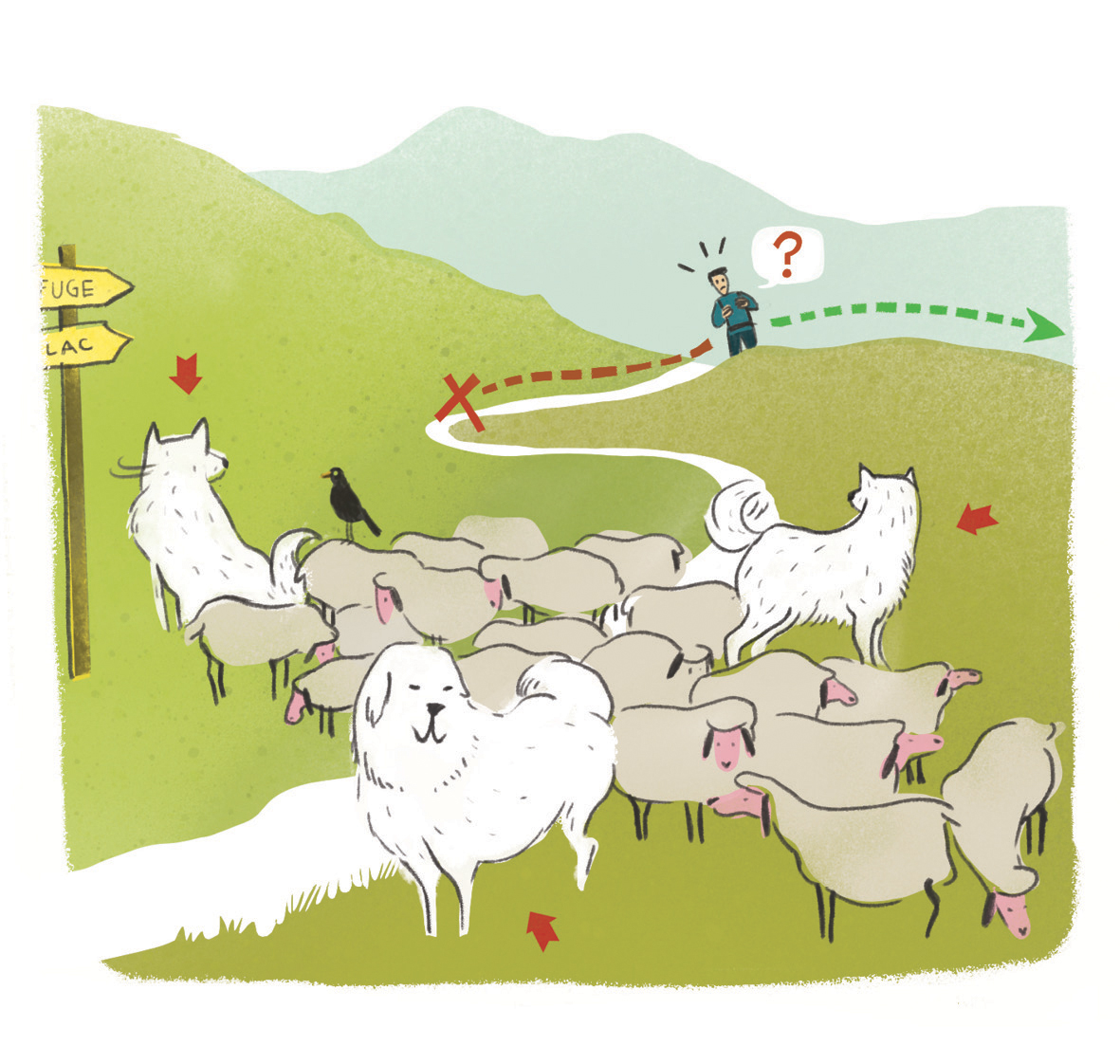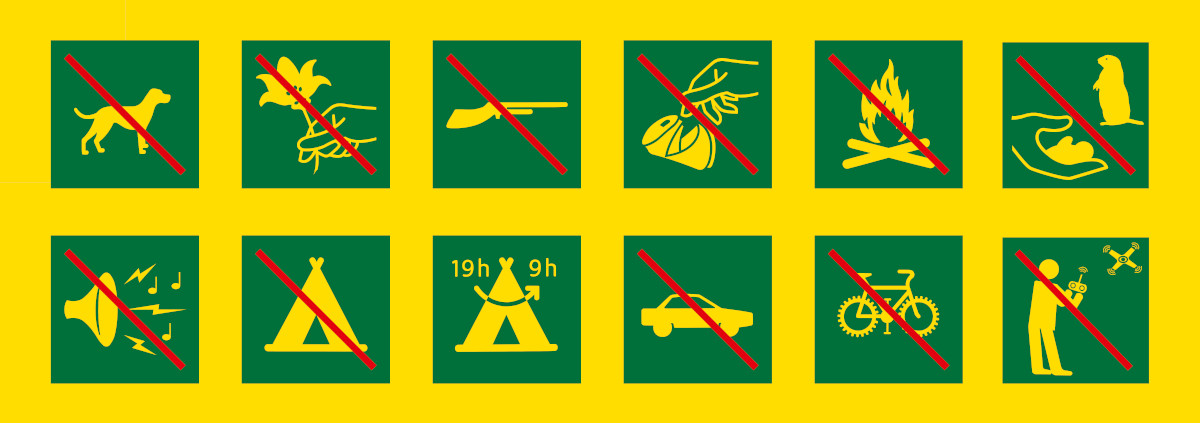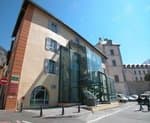Adèle Planchard Refuge
"Maintaining pedestrian access to the steep glacial slopes of the Grande Ruine is a challenge that the park rangers and those working in the park must take on every Spring. The itinerary for access to Adèle Planchard requires a day of work to clear away the stones which clutter the pathways and to maintain the cables in place on the steepest parts of the track. Circulation on the track must be cut off for 1 to 2 h that day, which sometimes upsets hikers and mountaineers who are impatient to finish their outing!"
Cyril Coursier – Heritage Technician in the National Park
8 points of interest
 History
HistoryRomanche valley, Charles Bertier
The Romanche was a source of inspiration for many mountain artists and it have been painted repeatedly. Charles Bertier (1860-1924) was inspired to paint Vallée de la Romanche au Pied-du-Col and Les Fréaux près de la Grave, two oil paintings that were painted in 1894. The artist from Grenoble learnt to paint landscapes with Jean Achard, and mountains with the abbot Guétal and did not hesitate to set up his easel on the high summits of the Dauphiné Alps. More to the point, his mission was to make his contemporaries 'understand the mountains'! Flora
FloraAlpine Columbines
Hidden at the foot of a rhododendron bush, caught between the scree and the edge of the, is a rare species, it is as bright as it is rare. Do not rub against the Columbine, or it will lose its petals. The leaflets are split with deep incisions, in a double layer to form simple leaves, lifting up young milky buds at the end of the stalk and magnificent widely spread out flowers, azur fragments lost in the vegetation. Columbine flowers are the only ones that possess five spurs, five petals at their extremities in a cornet, protected by five sepals in the form of a lance.
 History
HistoryAlpe Valley
Mountaineers have always particularly liked the Alpe valley. It has long been a place for a base camp, for several big classic climbs in the Massif des Ecrins. It is over the ice cap that the famous roped party Coolidge-Almer succeeded in making the first ascension into the mountain of the Agneaux. Le 17 July 1873 following this they carried out the first crossing of the Casse Déserte mountain pass and the ascent of the Pointe Brevoort at the Grande Ruine.
 History
HistoryExploitation of the mines
The valley has not only been a centre of interest for botanists and mountaineers. It still carries traces today of mining activity. Between 1835 until the beginning of the First World War, thirty to forty people worked in the extraction of minerals, mainly copper, on the slopes of the Chamoissière. A stamp mill enabled minerals to be ground. It remains at the site but is completely broken...
 Fauna
FaunaSmall Apollo Butterfly
A hardly perceptible rustling in the frozen morning grass betrays the presence of a butterfly disturbed by our steps and unable to use its damp wings... A few delicate jerks and there it is clinging onto some dry grass, then with successive spasms, it opens its pearly wings which are almost translucent in the sunshine, and finally exposes the totality of its anatomy. The Small Apollo, rare and protected – catching or transporting it are forbidden – and there, before our eyes, with its miniscule red ocelluson the edge of each of its upper wings and it’s finely black and white striped antennae.
 History
HistoryCabin at Charlin
This cabin built under a big rock was once used to stock materials and animals killed during hunting by a team of hunters that rented the Plate des Agneaux valley. At the creation of the National Park national, the building was abandoned... Today hunting is still forbidden in the heart of the Park but regulated in the surrounding area.
 Architecture
ArchitectureSolar Wall
At an altitude of 3200 m, the buildings are not connected to the national grid ". It is necessary to use energy efficiently. When the new refuge was built at the beginning of 1980s, the architects equipped the South facing wall with a solar wall. This kind of wall consists of a concrete or stone panel or stone with strong thermal inertia mounted to a glazed panel in order to create a green-house effect. During the day, the wall receives and conserves the heat of the sun. During the night this heat is recovered in the circulation of the air. This system enables the main room to be heated at a minimal cost.
 Hut
HutAdèle Planchard Refuge
Behind the name of the refuge hides an old story. Madame Adèle Planchard, one of the first mountaineers, she died in 1925, bequeathing a large amount of money to the Dauphinois Tourist Society (STD) for the construction of a refuge. The French Touring Club financed the opening of the track; with the transport of materials being carried out on the back of mules, with the help of soldiers based at Briançon and the valley guides... The first winter in1926 destroyed all the work carried during the summer. On the 7th August 1927, thanks to their strength of courage and self-sacrifice these men offered future generations the privilege of being able to open the door of the Adèle Planchard refuge on the North face of the Roche Faurio. A new refuge was inaugurated in 1984 and is in place beside the original one.
Description
From Gravière car park, follow the bottom of the valley on the right bank on an excellent track which crosses the Pas d'Anna Falque. The fork that divides the way between the refuges at Adèle Planchard is well indicated... Turn right and take the long path crossing the Plan de l'Alpe. A long flat section on the right bank in the bottom of the valley followed by a short steep path on the left bank takes you to a grass plain... A crossing of about 1 kilometer prepares you for the onerous ascent across rocky ledges which are sometimes equipped with cables... Fill up with water, there is none higher up. At the foot of the ultimate projection is an immense scree that you must ascend without getting lost. At last, Adèle Planchard refuge appears on the ridge protected from avalanches dominating this mineral space. Return following the same itinerary.
- Departure : Le pont d'Arsine, Villar d'Arêne
- Towns crossed : Villar-d'Arêne
Forecast
Altimetric profile
Sensitive areas
Golden eagle
- Impacted practices:
- Aerial, , Vertical
- Sensitivity periods:
- JanFebMarAprMayJunJulAug
- Contact:
- Parc National des Écrins
Julien Charron
julien.charron@ecrins-parcnational.fr
Recommandations
 In mountain pastures, protection dogs are there to protect the herds from predators (wolves, etc.).
In mountain pastures, protection dogs are there to protect the herds from predators (wolves, etc.).
When I hike I adapt my behavior by going around the herd and pausing for the dog to identify me.
Find out more about the actions to adopt with the article "Protection dogs: a context and actions to adopt".
Tell us about your meeting by answering this survey.
Information desks
Maison du Parc du Briançonnais
Place Médecin-Général Blanchard, 05100 Briançon
Located at the foot of the medieval town fortified by Vauban, declared World Heritage by UNESCO in 2008, the Maison du Parc Briançon is a welcoming place of information exchange. Three floors of exhibition to discover : the natural and cultural heritage, the museum of the history of skiing in Briançon. Documentation, maps, guidebooks, books and products of the Park. Guided tours for groups by reservation. Free admission.
Access and parking
From the Grave, take the D1091 in the direction of Villar d'Arêne. Turn left onto the D207. At the crossroads, turn right to Le Palun. Cross the Arsine bridge and park in the car park situated on the right.
More information
Source

Report a problem or an error
If you have found an error on this page or if you have noticed any problems during your hike, please report them to us here:


